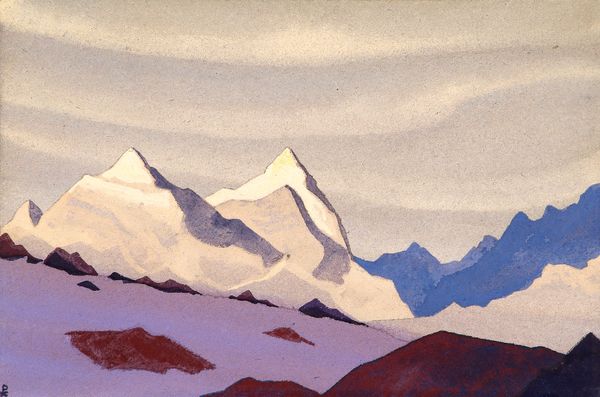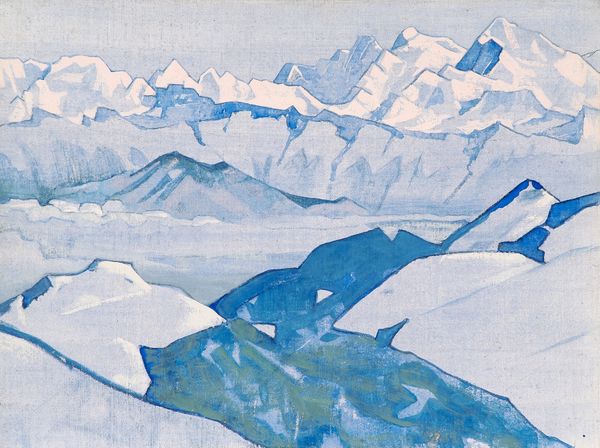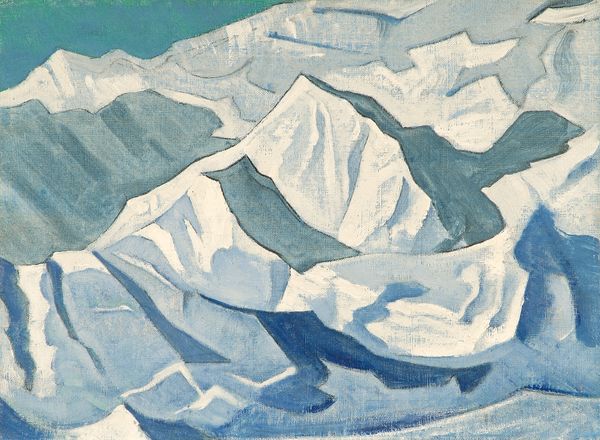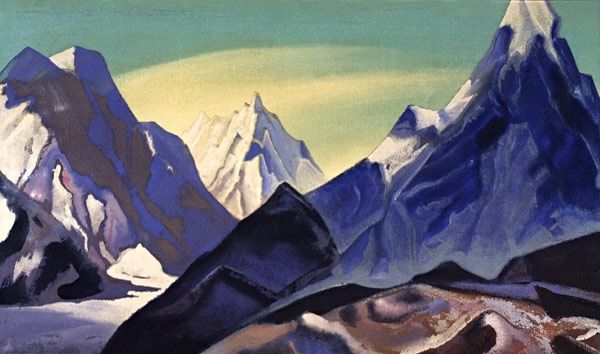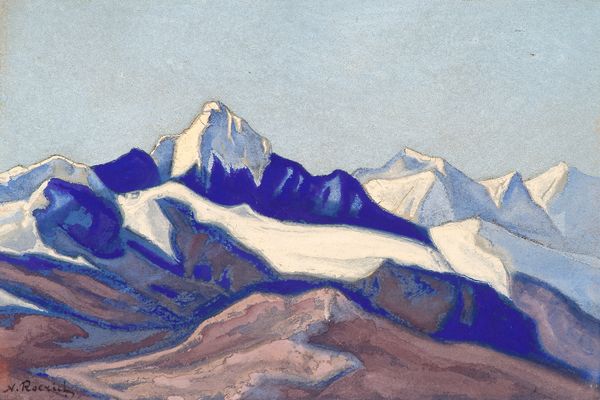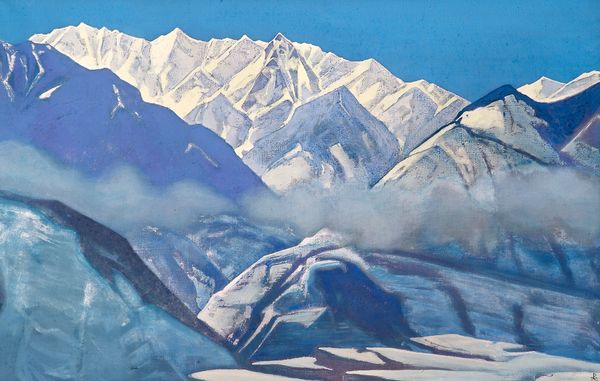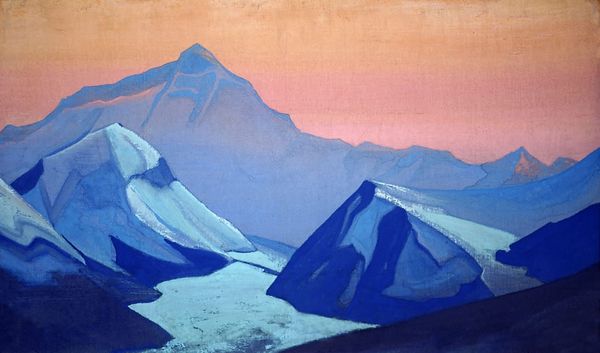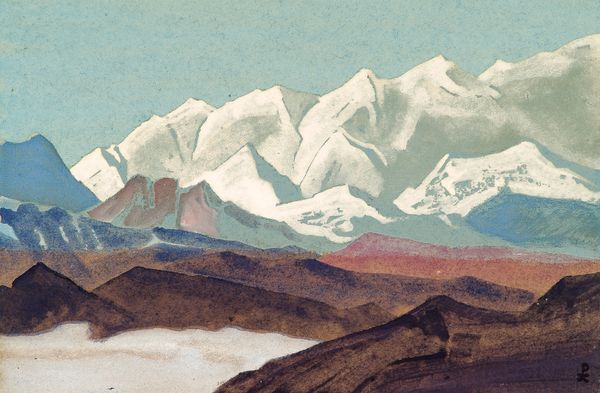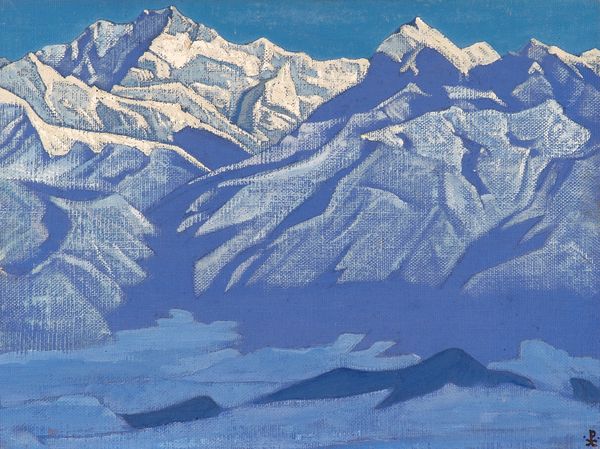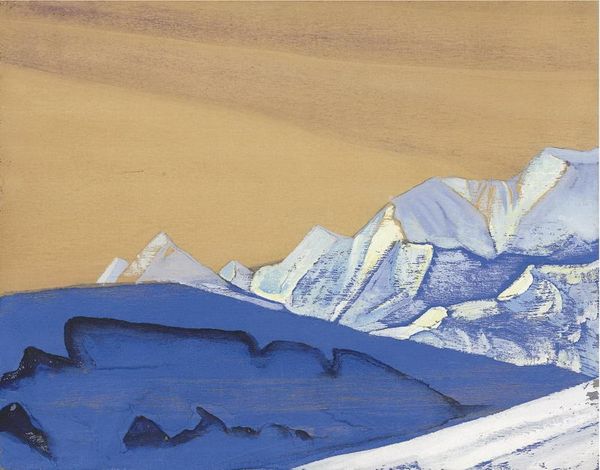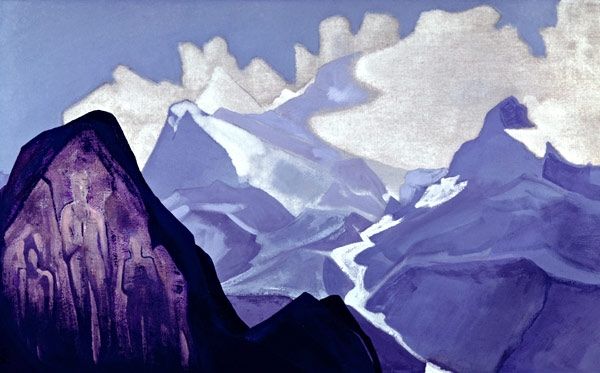
Copyright: Public domain
Editor: This is "Everest" painted in 1936 by Nicholas Roerich, made using tempera and pastel. It gives me a feeling of sublime grandeur but there is a lot of stark contrast. How would you interpret this work? Curator: Well, I’m drawn to the physical qualities of the pastel and tempera, how Roerich builds texture and layers of color to depict such an immense subject. The materials become metaphors. Editor: Can you say more about the materiality? Curator: Consider the tempera, its historical association with icon painting, imbued here with reverence. The pastel provides that soft atmospheric haze; this interplay underscores how the painting almost performs the mountain’s being. Do you see the angular application? It emphasizes the harsh environmental conditions, how the materials mimic those conditions. Editor: So the art supplies are doing more than just representing? Curator: Precisely! It's about how human labour, processing these raw pigments, shapes our perception. How does that affect your understanding of its spiritual themes, given your initial impression of starkness? Editor: I guess it highlights the labour it takes to create not just art but culture itself from nature’s resources, that is then projected onto a space that remains essentially untouched. Thanks, this was very informative. Curator: Yes, reflecting on the materials, Roerich prompts a new awareness about nature's transformation via art's physical and spiritual presence in culture.
Comments
No comments
Be the first to comment and join the conversation on the ultimate creative platform.
